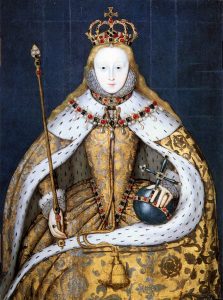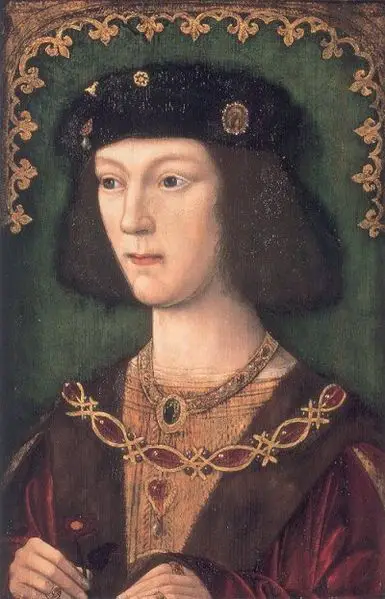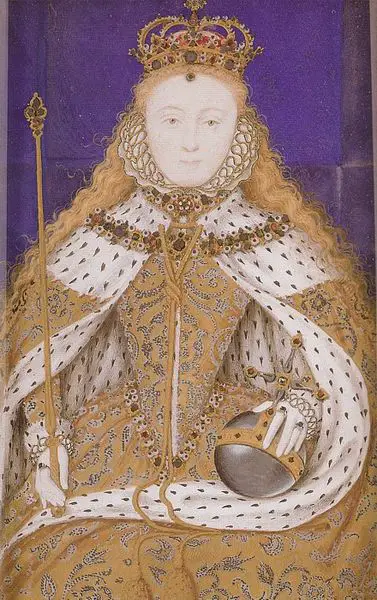 I have written about Elizabeth I's coronation, which took place on 15th January 1559, in previous years, but I just wanted to share with you this primary source account of both the coronation and the banquet following written by Il Schifanoya, the Mantuan ambassador, to the Castellan of Mantua:
I have written about Elizabeth I's coronation, which took place on 15th January 1559, in previous years, but I just wanted to share with you this primary source account of both the coronation and the banquet following written by Il Schifanoya, the Mantuan ambassador, to the Castellan of Mantua:
"On Sunday, 15th January, mass was sung for the coronation in Westminster Abbey, which was decorated with the handsomest and most precious tapestries that were ever seen, they having been purchased by Henry VIII., representing on one side the whole of Genesis, and on the other the Acts of the Apostles, from a design by Raffael d'Urbino; and the chambers were hung with the history of Cæsar and Pompey. At one of the sides the buffet was prepared with its raised steps, on which were seen 140 gold and silver drinking cups, besides others which were below for the service.
The Queen was received under the canopy by the Archbishop and another Bishop, they having previously perfumed her with incense, giving her the holy water and the pax, the choristers singing; then the Earl of Rutland followed her Majesty with a plain naked sword without any point, signifying Ireland, which has never been conquered; then came the Earl of Exeter with the second sword; the third was borne by Viscount Montagu; the Earl of Arundel, having been made Lord Steward and High Constable for that day, carried the fourth (sword) of royal justice, with its gilt scabbard loaded with pearls. The orb was carried by the Duke of Norfolk, Lord Marshal, and in advance were knights clad in the ducal fashion, carrying the three crowns, they being the three Kings-at-arms; they bore the three sceptres, with their three crowns of iron, of silver, and of gold on their heads, and in their hands three naked iron swords, signifying the three titles of England, France, and Ireland.
In this way they proceeded to the church, the Queen's long train being carried by the Duchess of Norfolk, after whom followed the Lord Chamberlain, upon purple cloth spread on the ground; and as her Majesty passed, the cloth was cut away by those who could get it. Then followed the duchesses, marchionesses, countesses, etc., dragging their trains after them, going two by two, and being exquisitely dressed, with their coronets on their heads, and so handsome and beautiful that it was a marvellous sight.
On her Majesty's arrival at the church, all the bells in London ringing, she ascended the lofty tribune erected between the high altar and the choir, being thus exhibited to the people, of whom it was asked if they wished her to be their crowned Queen? Whereupon they all shouted “Yes;” and the organs, fifes, trumpets, and drums playing, the bells also ringing, it seemed as if the world were come to an end. Descending from the tribune, the Queen placed herself under her royal canopy; and then the choristers commenced the mass, which was sung by the Dean of her Chapel, her Chaplain, the Bishops not having chosen to say mass without elevating the host or consecrating it, as that worthy individual did; the Epistle and Gospel being recited in English.
After the Epistle, the Bishop of Carlisle commenced the coronation according to the Roman ceremonial, neither altering nor omitting anything but the outward forms, which were not observed as in Italy; the English having no Masters of the Ceremonies, except the Kings-at-arms, and still less caring about formalities.
The mass and all the ceremonies being concluded, and the Queen having twice changed her apparel, they returned into Westminster Hall in the same order as at first, except that the clergy and the bishops remained in the Abbey; her Majesty carrying in her hands the sceptre and orb, and wearing the ample royal robe of cloth of gold. She returned very cheerfully, with a most smiling countenance for every one, giving them all a thousand greetings, so that in my opinion she exceeded the bounds of gravity and decorum.
In the meanwhile, the Lord Marshal, the Duke of Norfolk, and the Lord Steward, the Earl of Arundel, in accordance with their offices, proceeded to arrange the banquet. After inspecting the hall and excluding many persons, and carefully attending to the tables and the kitchen, the Queen during this interval having divested herself of her heavy robe, they dressed themselves again in short capes according to the Spanish fashion, the Earl of Arundel in cloth of gold, and the Duke of Norfolk in silver tissue, both their capes being lined with sables.
They then mounted two fine chargers, both of which had housings of the same material as their riders' apparel, the Duke's horse being covered with white lions rampant. The Duke was bareheaded, and had a silver truncheon in his hand, indicating the office of Lord Marshal. Arundel bore a silver staff a yard in length, indicating the office of Lord Constable, who for that day commanded the Duke and everybody. Both of them went about the victuals; and after 3 p.m., when the Queen commenced washing her hands, the water and the napkin were given her by the noblemen who had waited on her Majesty as server and as carver, viz., William Lord Howard of Effingham, Lord High Admiral, and the Earl of Sussex [Henry Ratcliffe], the former carving, and the latter placing and removing the dishes, both of them serving on their knees.
Beside her Majesty there stood those two Earls who had supported her to the Abbey by the arms, viz., Shrewsbury and Pembroke, with the sceptre and orb in their hands; the others likewise being in the Queen's presence with the aforesaid iron swords. They all remained covered with their coronets on their heads, and although her Majesty spoke occasionally to some of them, they never uncovered, except when she drank all their healths, thanking them for the trouble they had taken.
The banquet lasted till the ninth hour of the night, and I need not say that it was a stately one, as all persons may think for themselves. No one served but peers and the sons of peers. Much music was performed, but it not being remarkable, and having heard better, I will say nothing about it.
Westminster Hall is 400 paces in length (sic); in it four tables were prepared, but divided in the ceutre to facilitate the waiting of the servants, who all had red liveries; and no one was allowed, or at most but a few, to enter the Hall, or to remain there, unless he was dressed in red.
The Barons, titled and untitled, with the Council and Aldermen, Mayor, Sheriffs, and other men of the law (et altri huomini di legge), servants of the Court, baronesses, duchesses, ladies (dame) (of quality?), etc., sat at the first table, the peeresses having their coronets on their heads, there being also numerous knights and gentlemen of all sorts. At each table there sat upwards of 200 persons.
After the second course, which was brought like the first one to the trumpets' sound, and preceded by the Earl of Arundel and the Duke of Norfolk on horseback, a knight in steel armour, spear on thigh, and on a very handsome barbed charger, after saluting the Queen, proclaimed three times to the people that if there was any person of any grade or condition who denied, disputed, or contradicted that the Queen his Sovereign (pointing at her) was not the true and legitimate crowned Queen of England, France, and Ireland, he was ready to maintain it by force of arms to the death, throwing clown his gauntlet each time; and as no one answered him, he took leave of her Majesty, who drank his health and thanked him, giving him a silver-gilt cup worth 200 crowns. This was a country gentleman, whose family has long been privileged to do this at all the coronations.
The banquet being ended, the collation (la collatione) was brought by three Earls—Bedford, Oxford (Oxetle), and Montague, Shortly afterwards her Majesty rose, and by a covered way returned to her Palace of Whitehall by water; everybody in like manner returning home."
Source: Calendar of State Papers Relating To English Affairs in the Archives of Venice, Volume 7, 1558-1580, p. 16.



It REALLY must have been something to see ! Glad I wasn’t in charge !
LOVE the primary source accounts! Thanks Claire!
This is awesome, what a fab primary source based article 🙂
Thank you!